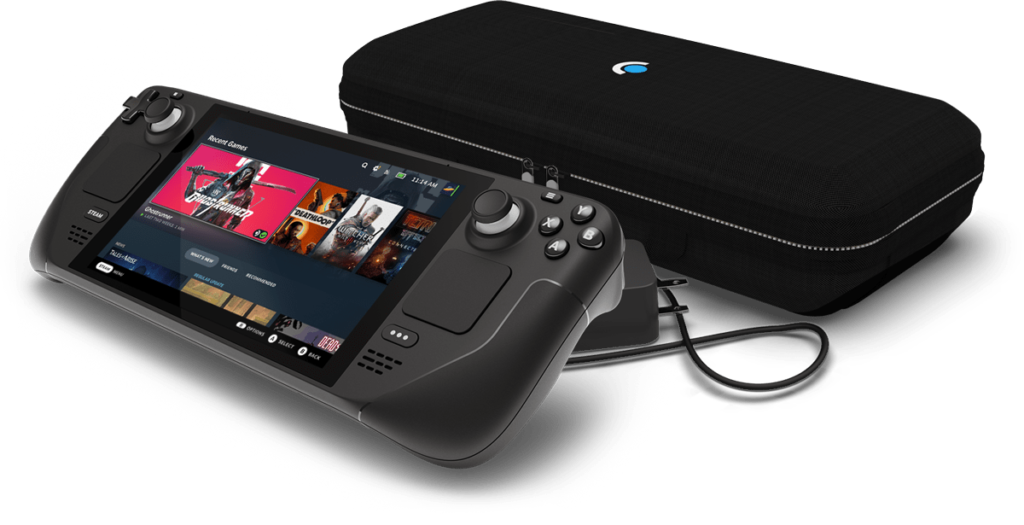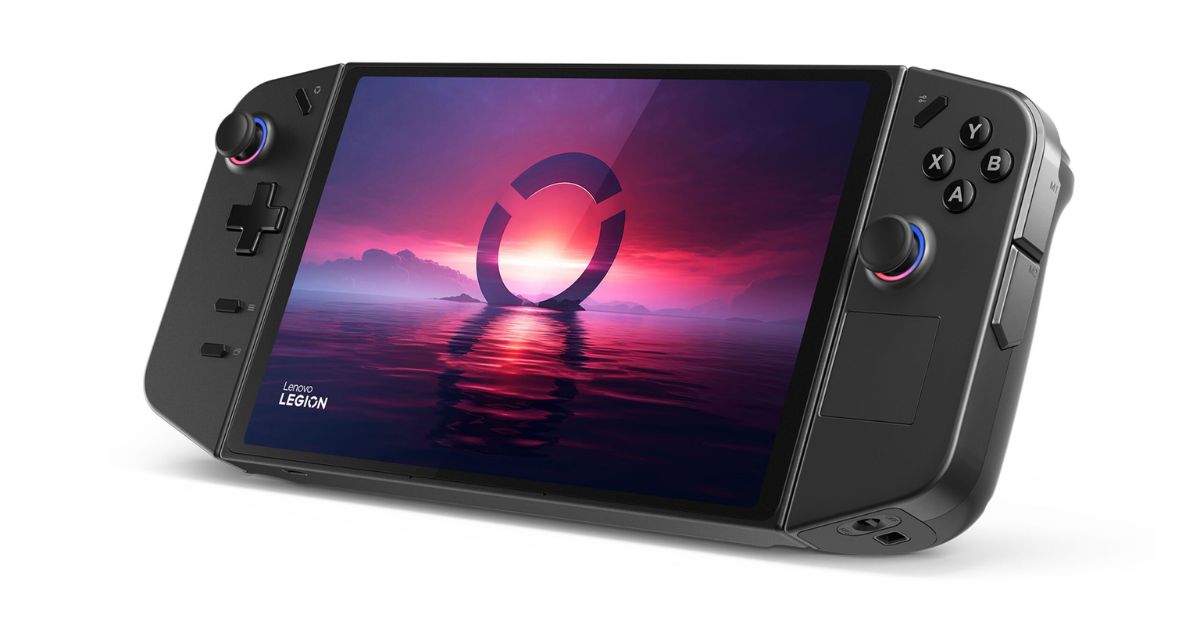Lenovo has recently unveiled its latest gaming innovations at the IFA tech show, introducing the Lenovo Legion Go and Legion Glasses. These new devices aim to enhance the gaming experience.
The Lenovo Legion Go represents a notable step in gaming handheld devices, particularly for Lenovo itself. It’s the company’s first Windows gaming handheld device, powered by AMD Ryzen Z1 Series processors, providing gamers with a portable gaming solution. Featuring an 8.8-inch Lenovo Pure Sight Gaming Display, the Legion Go offers clear and detailed visuals.
Jun Ouyang, Lenovo’s Vice President and General Manager of the Consumer Business Segment, Intelligent Devices Group, emphasized the company’s commitment to providing versatile gaming solutions, highlighting the convenience of gaming on the go with the Lenovo Legion Go.
Under the hood, the Legion Go packs a punch with the AMD Ryzen Z1 Extreme processor, AMD RNDA Graphics, and Windows 11 platform. Its display supports various resolutions and refresh rates, offering flexibility to gamers. With up to 16GB LPDDR5X RAM and a fast 1TB PCIe Gen4 SSD, the Legion Go promises quick loading times and optimal gaming performance. The micro-SD slot can provide up to 2TB of additional storage.
Battery life is essential for gaming on the go, and the Legion Go features a substantial 49.2Wh capacity battery. It also supports Super Rapid Charge for quick recharges, ensuring minimal downtime during gaming sessions.
In addition to the Legion Go, Lenovo is expanding its gaming ecosystem with the Lenovo Legion E510 7.1 RGB Gaming headphones. These headphones deliver immersive 7.1 surround sound and come with a multifunction inline controller for audio customization. The company also unveiled Legion Glasses, which offer a unique and immersive experience with micro-OLED display technology and FHD resolution for each eye. With a 60Hz refresh rate, they provide a massive, high-definition screen-like experience.
Lenovo’s Legion Go has entered the competitive arena of gaming handheld devices, particularly with the likes of the ROG Ally and Steam Deck already making headway. So how does the Lenovo Legion Go compare with its contenders?
Lenovo Legion Go vs. ROG Ally
The ROG Ally by ASUS is arguably the Lenovo Legion Go’s most significant competitor in the gaming handheld market. Both devices are priced at USD 699 and are designed to offer gamers a portable Windows gaming experience. Additionally, when comparing the two, it’s evident that they share more common ground:
- Processor and Graphics: Both devices offer powerful processors and graphics. The Legion Go boasts the AMD Ryzen Z1 Series processors, while the ROG Ally features AMD Ryzen processors as well. Graphics performance is a key factor, and both devices deliver solid gaming experiences.
- Display: In terms of display quality, both Lenovo and ASUS prioritize clarity and detail. The Legion Go boasts an 8.8-inch 2560 x 1600-pixel IPS, 144Hz refresh rate, Lenovo Pure Sight Gaming Display, while the ROG Ally features a high-quality display designed for gaming. It has 7-inch 1920 x 1080-pixel IPS, a 120Hz refresh rate.
- Battery Life: Battery life is crucial for portable gaming, and both devices offer substantial battery capacities to ensure extended play sessions. Lenovo Legion Go provides 49.2Whr and ROG Ally provides 40Whr Battery Capacity.
- Storage: Storage options are important for gamers who want to store their favorite titles. Both the Legion Go and ROG Ally offer expandable storage, with micro-SD slots for additional space.
- Operating System: Both devices run on Windows, providing gamers with access to a wide range of gaming titles and software.

However, there are two standout features that propel the Lenovo Legion Go into a leading position: an upgraded display and an enhanced battery capacity, promising to significantly boost its endurance. Ultimately, the choice between the Lenovo Legion Go and ROG Ally may come down to personal preferences, specific features, and price.
Lenovo Legion Go vs. Steam Deck
Valve’s Steam Deck is arguably the biggest player in the gaming handheld market. Here’s how it compares to the Lenovo Legion Go:
- Operating System: While the Lenovo Legion Go runs on Windows, the Steam Deck utilizes SteamOS, a Linux-based operating system.
- Game Library: The Steam Deck has direct access to the extensive Steam game library, which is a major advantage for gamers who are already invested in the Steam ecosystem.
- Customization: Steam Deck offers a degree of hardware customization, allowing users to install their preferred operating system, which may include Windows for a broader game library.
- Price: The Lenovo Legion Go will retail for $699/£699. To put this price in perspective, it is more expensive than the 512GB Steam Deck. Steam Deck price is $399 to $649.
- Display: The Legion Go boasts an 8.8-inch 2560 x 1600-pixel IPS, 144Hz refresh rate, Lenovo Pure Sight Gaming Display, while the Steam Deck features a high-quality display designed for gaming. It has 7-inch 1280 x 800-pixel IPS, 60Hz refresh rate.
- Processor and Graphics: The Legion Go boasts the AMD Ryzen Z1 Extreme with AMD RDNA Graphics, while the Steam Deck features AMD Zen 2 with AMD RDNA Graphics.
Ultimately, the choice between the Lenovo Legion Go and Steam Deck may depend on whether a gamer prioritizes access to the Steam library or the flexibility of a Windows-based system.

So far, the Steam Deck has sold over a million units, with lifetime sales of Valve’s Steam Deck set to surpass three million units in 2023, according to a report from research firm Omdia.
Lenovo Legion Go vs. PlayStation Portal
But it’s not just Valve, Asus, and Lenovo, even Sony is also getting in on the action. The PlayStation Portal is the company’s upcoming handheld gaming accessory for the PlayStation 5. However, it should be noted that the PS Portal looks to operate as an accessory as opposed to a full-blown handheld device. With an 8-inch 1080p resolution screen at 60fps, the PlayStation Portal allows users to stream and play games installed on their PS5, contingent on a fast Wi-Fi connection. However, it won’t support PS VR2 games or PS5 cloud streaming. The PlayStation Portal will launch later this year for USD 199.99.
Growing competition
Of course, Legion Go is the latest entry to an increasingly growing and dynamic market of gaming handheld devices. As gaming enthusiasts seek more flexibility and mobility in their gaming experiences, the likes of Legion Go, ROG Ally, and Steam Deck offer much promise in that department.
The Legion Go’s capability to run on Windows, the availability of an array of gaming titles, and its integration with Lenovo’s expanding Legion ecosystem make it an appealing choice for gamers. Whether you’re an avid PC gamer looking to extend your gaming sessions on the move or a fan of high-quality, immersive visuals, the Legion Go marks an interesting addition. Though, how far it will be an appealing choice in actuality, only time will tell.







GIPHY App Key not set. Please check settings